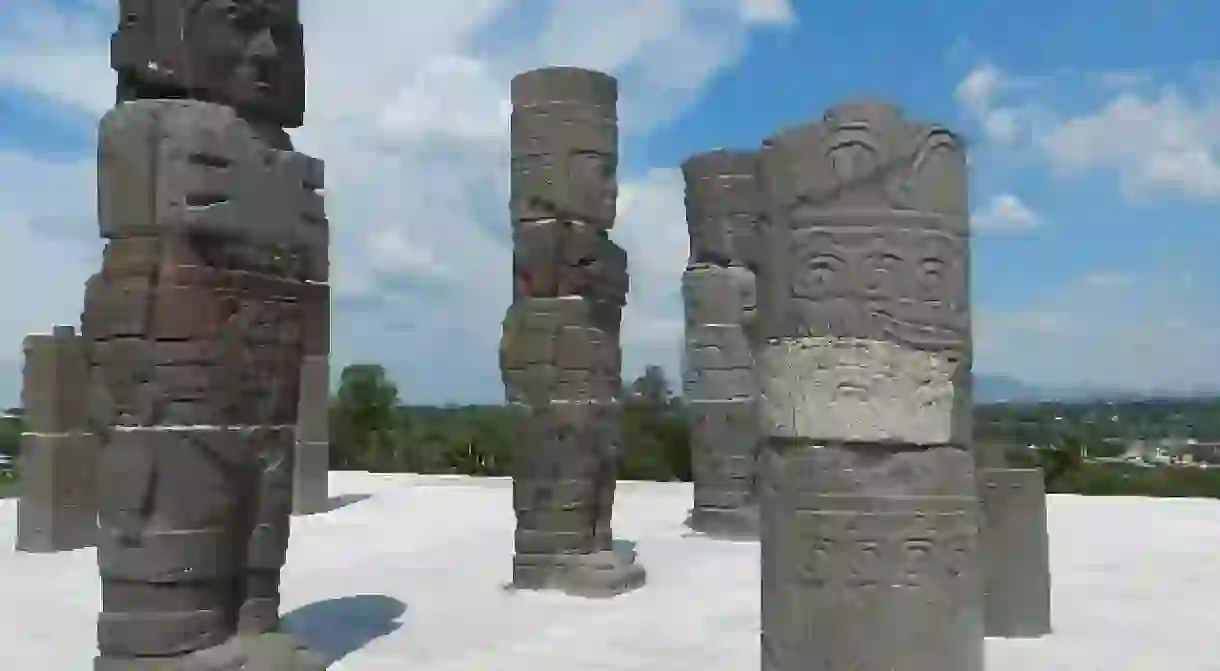The Best Archeological Sites to Visit near Pachuca, Mexico

The central part of Mexico has been an important location since the early days of Mesoamerica, and within Mexico City, Hidalgo, and the State of Mexico you will find endless opportunities to learn about the history of this important region. These are a few of the biggest and best archeological sites to check out.
Teotihuacan
Only a little over an hour away by car, Teotihuacan in the State of Mexico is one of the most prominent sites you can see near Pachuca. Teotihuacan, meaning “city of the gods,” and so named by the Aztecs when they found it abandoned, is home to one of the world’s tallest pyramids, and some of the New World’s most exact urban planning is involved in the layout of its streets.
The site has a small museum that provides a well-rounded picture of its history, and each year for the spring equinox, thousands of pilgrims climb the Pyramid of the Sun to be recharged for the year ahead.

Xihuingo
Located along the Pachuca–Ciudad Sahagún highway, the Xihuingo site is one of the oldest in the area and is believed to date back to 100 AD. The site’s pyramid, Tecolote, sits at the foot of the Cerro de Xihuingo (Xihuingo hill) and was believed to function as a religious and ceremonial center for its original inhabitants. Various illustrations of the everyday life and the belief systems of its people have been discovered here.

Huapalcalco
A small site located just north of a town called Tulancingo, Huapalcalco is home to the artifacts and remains of a tribe from the Gulf Coast of Mexico who were similar to the people of Teotihuacan. The site complex is made up of a single triangular stone base, with a staircase and four sections that have been superimposed on that structure. There are also the remains of a small stone canal and other fragments of ruins believed to have been bedrooms. According to Mayan legend, this site was once the home of Ce Acatl Topiltzin, who would become the god Quetzalcoatl later in his life.

Tula de Allende
The home of Quetzalcoatl and the center of the Toltec empire that flourished between the fall of Teotihuacan and the rise of Tenochtitlan, the Tula archeological site is one of the most important in this area of the republic. The ruins have been studied less then some other, more well-known sites in Mexico, and so many mysteries remain as to the social, cultural, and political organization of the people who lived here.
Its most important feature is the Quetzalcoatl pyramid with carved stone Toltec warrior statues at its top. You will find a Mesoamerican ball court and various other religious and dwelling buildings. The site also has a small museum.

El Conde
This site is one of the few still in existence that give us a look at the civic architecture of the post-Classical period. The main structure was the home of Lord Manuel Conde and includes the bedroom of the emperor, as well as various rooms for everyday use in the palace and for conducting official business. There are also structures believed to be guardhouses. A small but well-maintained site, El Conde is in the municipality of Naucalpan de Juárez, in the State of Mexico.
Tlatelolco and Templo Mayor
Main centers of the Aztec empire at Tenochitlan’s peak, Tlatelolco and Templo Mayor are almost all that remain of that Aztec city (now Mexico City) after it was conquered by the Spanish. Both sites offer a look into the religion and the everyday practices of Aztec people, and both have a museum displaying the artifacts that were found during excavation. Both sites were major markets in the city and both continue to be important political and cultural meeting places today.

Texcotzingo
Designed by the pre-Columbian ruler Nezahualcoyotl, Texcotzingo was the Aztecs’ imperial gardens, a place for the upper echelons of the Aztec empire to relax and indulge in the sensual pleasures of life. The extensive gardens were once one of the biggest botanical showcases in the New World, with thousands of native plants on display. You will see the remains of an intricate water system that included pools for recreation, decorated with symbolic carvings that represented the cosmological vision of the Aztecs and their political alliances.

Pañhu
A site that was at the height of its development in the Late Classic period, Pañhu was important as a connective city between central and northern Mexico. It is believed they were culturally connected to the peoples of Mexico’s Bajio region further north, and despite being contemporaries of the city of Teotihuacan, the city managed to survive the collapse of this nearby economic powerhouse and go on to be an important location in the years that followed. The name Pañhu means “trail of fire” and the site is located at the top of a high hill and requires a long, hot journey to reach it, which probably explains the origin of the name.













